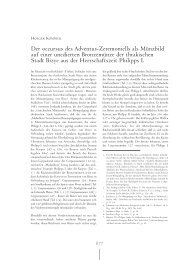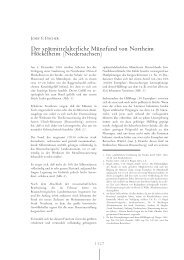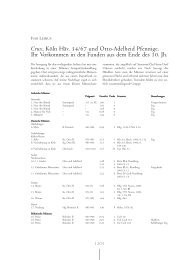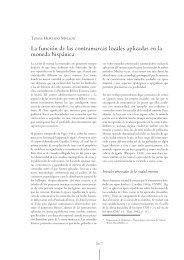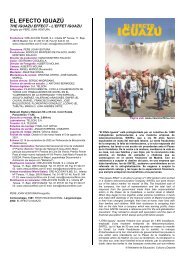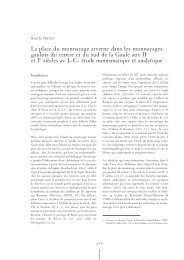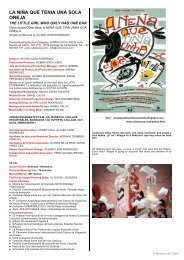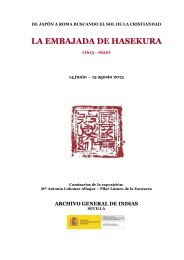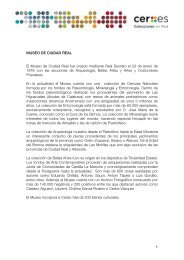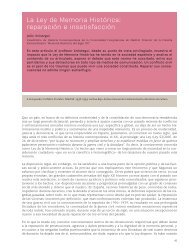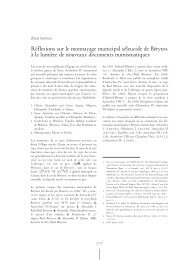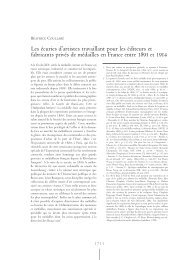Study on the use of subtitling
Study on the use of subtitling
Study on the use of subtitling
Create successful ePaper yourself
Turn your PDF publications into a flip-book with our unique Google optimized e-Paper software.
2.25 at present. The languages studied most are English, French, Spanish, Italian, German and<br />
Russian.<br />
C<strong>on</strong>cerning <strong>the</strong> media <strong>on</strong> which films are viewed, those surveyed seem to prefer TV (91%). The<br />
sec<strong>on</strong>d most widely <strong>use</strong>d medium is DVD (66%), followed by cinema (60%) and internet (57%).<br />
These data are particularly interesting compared with those <strong>on</strong> <strong>the</strong> preferences <strong>of</strong> <strong>the</strong>se same<br />
resp<strong>on</strong>dents before beginning university. What stands out in particular is that <strong>the</strong> tendency to<br />
prefer <strong>the</strong> original versi<strong>on</strong> <strong>of</strong> a film in a known foreign language is much more pr<strong>on</strong>ounced<br />
am<strong>on</strong>g students in language faculties than am<strong>on</strong>g those in n<strong>on</strong>-language faculties.<br />
The preference for a dubbed film in a known foreign language shows a pr<strong>on</strong>ounced change<br />
am<strong>on</strong>g language-faculty students, dropping from 42% (before university) to 13.5% (today); for<br />
students from n<strong>on</strong>-language faculties, <strong>the</strong> change is a bit less prominent (from 42% to 33%).<br />
If <strong>the</strong> film is in an unknown foreign language, students from n<strong>on</strong>-language faculties keep <strong>the</strong>ir<br />
habits, whereas <strong>the</strong>re is a more visible change am<strong>on</strong>g students from language faculties, who<br />
show a clearer preference for <strong>subtitling</strong> <strong>on</strong>ce <strong>the</strong>y have begun university.<br />
Faculty Time Film in known foreign language Film in unknown language<br />
OV Subtitled Dubbed Subtitled Dubbed<br />
Language Today 42% 44.5% 13.5% 75% 25%<br />
Before univ. 9% 49% 42% 58% 42%<br />
N<strong>on</strong>-language Today 10% 57% 33% 54.5% 45.5%<br />
Before univ. 1.5% 56.5% 42% 53.5% 46.5%<br />
Table d. Audiovisual habits today and before beginning university, by faculty<br />
5.2.3 Results grouped by audiovisual traditi<strong>on</strong><br />
This secti<strong>on</strong> compares language transfer preferences and language skills <strong>of</strong> students from<br />
dubbing countries, <strong>subtitling</strong> countries and voice-over countries. As a methodological precauti<strong>on</strong>,<br />
it should be pointed out that, since language transfer practices can vary within <strong>the</strong> same country,<br />
groups were set up based <strong>on</strong> <strong>the</strong> practices adopted for televisi<strong>on</strong>.<br />
Dubbing countries (Austria, Belgium (French-speaking), Cyprus (Turkish-speaking), Czech<br />
Republic, France, Germany, Hungary, Italy, Slovakia, Spain, Switzerland and Turkey).<br />
Of <strong>the</strong> 1 515 students in language faculties from <strong>the</strong>se countries, <strong>the</strong> preference for <strong>the</strong> original<br />
versi<strong>on</strong> <strong>of</strong> a film in a known foreign language, without (36.5%) or with (48.5%) subtitles, is<br />
impressive compared with <strong>the</strong> percentage <strong>of</strong> students who prefer dubbing (15%).<br />
Dubbing<br />
country<br />
Students OVL STL DL STnL DnL<br />
LANG 1 515 36.5% 48.5% 15% 65% 35%<br />
Table e. Results grouped by country, audiovisual policy and faculty – dubbing countries, language<br />
faculties<br />
Even if <strong>the</strong> film is in an unknown language, despite <strong>the</strong> audiovisual traditi<strong>on</strong> in <strong>the</strong>ir country,<br />
students in language faculties from dubbing countries still prefer <strong>subtitling</strong> (65%) to dubbing<br />
(35%). The reas<strong>on</strong>s given by those who prefer <strong>the</strong> original versi<strong>on</strong> with or without <strong>subtitling</strong> are<br />
primarily related to semiology and foreign language learning, while <strong>the</strong> o<strong>the</strong>rs prefer dubbing for<br />
reas<strong>on</strong>s <strong>of</strong> simplicity <strong>of</strong> understanding or out <strong>of</strong> habit.<br />
The data are significantly different in <strong>the</strong> case <strong>of</strong> <strong>the</strong> 880 students in n<strong>on</strong>-language faculties. If<br />
<strong>the</strong> film is in a known foreign language, nearly half <strong>of</strong> those who resp<strong>on</strong>ded to <strong>the</strong> questi<strong>on</strong>naire<br />
prefer <strong>the</strong> original versi<strong>on</strong>, without (3%) or with (46%) subtitles. The o<strong>the</strong>r half prefer dubbing<br />
(51%). If <strong>the</strong> film is in an unknown foreign language, <strong>the</strong> preference for dubbing is obvious, with<br />
FINAL REPORT- JUNE 2011 Media C<strong>on</strong>sulting Group -- page 20



